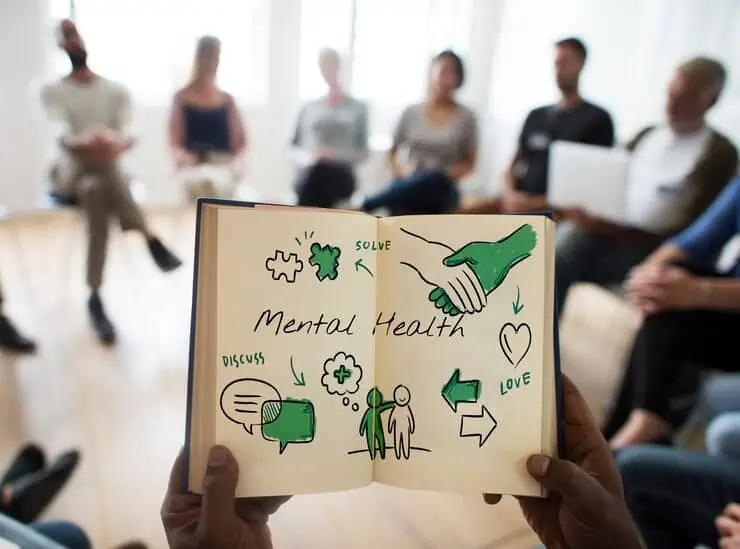
Diversity, Equity, and Inclusion (DEI) encompasses the principles and practices aimed at creating environments where all individuals are respected, valued, and supported, regardless of their differences in race, ethnicity, gender, sexual orientation, age, ability, or other characteristics. DEI initiatives promote fairness, representation, and the removal of barriers that prevent equal opportunities for all.
In contemporary society, mental wellness has emerged as a critical component of overall well-being. Due to increased awareness, advocacy, and changes in societal attitudes, mental wellness is becoming more recognized and important.
The interconnectedness of DEI and mental wellness underscores how social, economic, and cultural factors impact mental health outcomes. DEI initiatives can have a profound effect on mental wellness by fostering environments that reduce discrimination, promote belonging, and address systemic inequalities that can contribute to stress, anxiety, and other mental health challenges. Understanding the relationship between mental health and DEI is essential for creating inclusive environments that support the holistic well-being of individuals and communities.
According to Forbes, “mental health and DEI are closely connected. Employees from diverse backgrounds can face lack of representation, micro-aggressions, unconscious bias, and other stressors that impact their mental health and psychological safety at work.”
The absence of effective DEI initiatives can significantly impact the mental wellness of marginalized groups due to:
Research consistently shows that LGBTQ+ individuals experience higher rates of anxiety compared to their non-LGBTQ+ counterparts. This disparity is often linked to minority stress resulting from societal stigma, discrimination, and the lack of affirmation of their identities within broader social contexts.
Moreover, immigrants and refugees may face language barriers, cultural isolation, and uncertainty related to legal status, leading to heightened stress, depression, and post-traumatic stress disorder (PTSD). The lack of culturally competent mental health services can further compound these challenges.
DEI and wellbeing initiatives create a ripple effect, fostering a work environment that promotes mental well-being for all employees. Here’s the role of mental health in DEI:
Equitable access to mental health resources demonstrates an organization’s commitment to employee well-being. This could include offering mental health insurance coverage, Employee Assistance Programs (EAPs), or on-site counseling services. Knowing that help is available can empower employees to address mental health challenges proactively, leading to improved overall well-being.
A diverse workforce brings a wide range of perspectives and experiences to the table. These perspectives can lead to creative solutions, better problem-solving, and a more innovative work environment. By fostering understanding and empathy through open dialogue, a diverse team can reduce stress and create a more supportive atmosphere for everyone.
By promoting DEI, organizations can create environments that prioritize mental wellness as an integral part of the workplace culture. Investing in inclusive practices not only benefits individual employees but also strengthens overall organizational resilience and performance. A commitment to DEI and wellbeing demonstrates a proactive approach to supporting mental health and building communities where everyone can thrive.
Implementing effective strategies to DEI alongside mental wellness requires proactive and intentional efforts. Here are actionable steps that organizations can take:
Here are some other ways:
By implementing these strategies, organizations can create a work environment that fosters both DEI and mental well-being. This leads to a happier, healthier, and more productive workforce for everyone.
DEI and mental well-being are intricately linked. A lack of DEI can significantly hinder mental health, while strong DEI practices create a foundation for a thriving and supportive work environment.
By actively promoting DEI through unconscious bias training, building diverse teams, and prioritizing mental health resources, organizations can foster a sense of safety, belonging, and open communication. This benefits not only employee well-being but also leads to a more innovative, engaged, and productive workforce. Investing in both DEI and mental wellness initiatives creates a positive ripple effect, ultimately fostering a successful and sustainable organization.
Organizations can support DEI and mental wellness by implementing inclusive policies, offering mental health resources and benefits, conducting training on bias and inclusion, and fostering a culture of open communication and support.
Marginalized groups often face barriers such as stigma, discrimination, language barriers, and a lack of culturally competent services when accessing mental health care. Addressing these challenges is crucial to promoting equitable access to mental health resources.
Equity ensures fair access to resources, opportunities, and support systems for all individuals. Addressing systemic inequalities and barriers promotes a sense of fairness and empowerment, which can alleviate stress and anxiety related to discrimination and marginalization.